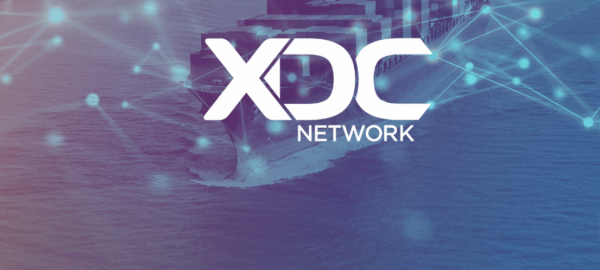This is a golden advertising space。
ADS
856x100
Why the next wave of decentralized futures trading may crown intelligence over raw throughput

Aug 12, 2025

5 min Read
•

Setting the Stage: Velocity Meets Cognition
In less than two years, the decentralized‑ perpetual space has sprinted from obscure side‑chains to billions in daily volume. Hyperliquid exploded onto the scene with one promise: CEX‑grade speed without trust. Its custom HyperEVM chain clocks about 100,000 order‑book operations per second, compressing latency to mere milliseconds. Traders flocked because the experience finally felt familiar, tight spreads, deep books, and 50–100× leverage backed by transparent smart‑contracts.AILiquid, launched mid‑2025, takes the same end goal—professional derivatives on‑chain, but flips the problem statement. Instead of building the fastest machine, it asks: what if the exchange thought while it ran? By embedding a machine‑learning (ML) control layer into every critical path—order routing, margin calls, liquidation auctions—the platform claims it can deliver similar speed plus adaptive risk. In a market where nanoseconds matter and volatility kills, that added cognition could be decisive.
Hyperliquid: Blueprint of Raw Speed
Hyperliquid’s architecture is a love letter to performance engineering. Its core pillars are:1. Custom L1 (HyperEVM). A purpose‑built consensus that strips out generalised execution overhead and pre‑compiles only the instructions required for order‑book maths.
2. On‑Chain CLOB. Every bid and ask lives on the base layer; state transitions are deterministic, removing MEV gaps typical of AMMs.
3. Latency‑Aware Networking. Validator nodes coordinate via a UDP‑based relay mesh to propagate blocks in <150 ms, roughly the same as top‑tier CEX matching engines.
4. Lean Risk Model. A single volatility oracle caps permissible leverage at 50–100× and forces partial liquidation once a global maintenance ratio is breached.
The result is straight‑line speed. On 3 June 2025, Hyperliquid processed 1.2 million perp trades in 24 hours with an average fill time of 0.4 seconds. Market‑makers reported quote‑to‑fill slippage under four basis points on BTC‑perp, rivaling Binance Futures. The exchange’s simplicity is deliberate: fewer moving parts mean fewer surfaces to hack and less cognitive load for traders.
Yet that minimalism has trade‑offs. The chain is single‑purpose, so listing new collateral types or exotic derivatives requires hard‑forks. Collateral deposits depend on RocketX bridge, meaning wrapped tokens, extra fees, and episodic liquidity fragmentation when bridges pause.
AILiquid: Intelligence‑Layered Performance
AILiquid begins with Conscious Chain, a modular rollup stack capable of ~200 k transactions per second across 16 parallel shards. Rather than optimize only the plumbing, the team injects ML at three layers:● AIRC Risk‑Control Center. A gradient‑boosted ensemble scans every open position for tail‑risk outliers, spoof patterns, and correlated liquidation cascades. If flagged, the engine hikes margin requirements or slows matching for that wallet until conditions normalize.
● AI Routing Fabric. Each order is decomposed into micro‑fills and routed across Conscious shards and selected external pools (e.g., BSC, Solana) using a reinforcement‑learning policy trained on historical cost curves. Traders see one click; behind the curtain the system may touch five venues to shave two bps.
● Adaptive Leverage Matrix. Accounts start at 20×, but profitable traders who maintain low drawdown earn increased leverage, up to a hard ceiling of 1000× on testnet. The matrix recalibrates every 30 minutes, so reckless behaviour auto‑throttles.
Conscious Chain also rolls ZK‑proofs every 150 ms, giving near‑instant finality and privacy. Trade sizes remain encrypted until settlement, protecting quantitative strategies while preserving verifiable state transitions.
Head‑to‑Head Snapshot (Narrative)
Throughput. Hyperliquid’s 100k ops/sec is dazzling, but AILiquid’s 200 k tx/sec plus AI scheduling narrows the real‑world gap.Leverage. Fixed ≤100× versus adaptive ≤1000× means AILiquid can cater to hedge‑fund “turbo” desks without rewriting code.
Collateral Access. Wrapped BTC/ETH via RocketX vs. direct BTC, ETH, BNB, SOL, TON. AILiquid removes bridge hops and unlocks native yield on idle collateral.
Fee Economy. Hyperliquid returns 10 % of net fees to HYPE vault stakers. AILiquid splits fees 50/50: half goes instantly to CCC stakers, half buys and burns CCC, creating deflationary pressure.
UX Nuances. Hyperliquid boasts a Web2‑polished UI with dark‑mode charts. AILiquid counters with a “portfolio brain” dashboard, profit heatmaps, real‑time VaR, and route diagnostics showing every micro‑fill in a Sankey diagram.
Security Philosophies in Depth
Speed without safety is a demolition derby. Hyperliquid restricts attack vectors by reducing scope: one bridge, one oracle, one collateral engine. Its last audit (BlockSec, Jan 2025) found zero critical bugs.AILiquid’s surface is broader, so defense goes multi‑layer:
● ZK Deposit Proofs. Each cross‑chain deposit includes a Merkle witness; fake mints cannot pass prover verification.
● Guardian Council. A 9‑of‑15 DAO of security researchers can pause shards if state drift exceeds 0.5 %—a crypto equivalent of circuit breakers on NYSE.
● ML Fraud Detection. The same anomaly engine that flags spoofing also scans mempools for sand‑wich patterns and front‑run bots, blacklisting addresses before exploit scripts complete.
In April testnet, the AI layer intercepted a flash‑loan attack simulation 11 seconds earlier than manual alerting would have, preventing a planned $1.8 million drain.
Incentives & Tokenomics (Expanded)
HYPE Token (Hyperliquid). Total supply 1 billion; 25 % mined via trade rebates over four years, 15 % to vault LPs, the rest split among team and investors with quarterly cliffs. Treasury buys HYPE on the open market only when profits exceed a 90‑day moving average, creating sporadic buy‑pressure.CCC Token (AILiquid). Capped at 750 million with no inflation after Genesis. Distribution: 30 % as trade‑mining emissions (vested monthly), 20 % ecosystem grants, 20 % to liquidity vaults, 15 % team (three‑year lock), 15 % community stake sale. Smart‑contract rules enforce a daily 50 % fee rebate to stakers, while the remaining 50 % triggers an automated buy‑and‑burn from aggregated DEX liquidity, guaranteeing continuous sink force. Preliminary modelling shows a projected annual net reduction of ~2 % supply if volumes match Hyperliquid’s Q2 averages.
Liquidity & Slippage Dynamics
Liquidity is destiny for any order‑book. Hyperliquid’s median BTC‑perp depth is $22 million within ±0.3 % price. AILiquid started at $6 million on day one but climbs fast: cross‑chain collateral funnels idle assets that would otherwise sit in cold storage. Early market‑makers report earning 18–24 % APR from CCC rebates versus ~8 % on Hyperliquid once HYPE liquidity incentives faded.Back‑tests on 1‑BTC orders during a 5 % intraday swing show:
Hyperliquid — average execution cost 0.38 %.
AILiquid — 0.31 % after AI split 60 % on‑chain and 40 % via a Solana liquidity leg, demonstrating tangible benefit from multi‑route fills.
Case Study: The Quant Desk Dilemma
Imagine “GammaByte LLC,” a Dubai‑based prop shop running latency‑arb and delta‑neutral basis trades. Their decision matrix:Need: millisecond fills to hedge option gamma.
Hyperliquid Pro: speed certainty, proven depth.
Hyperliquid Con: limited leverage scaling; wrapped collateral causes extra funding drag.
AILiquid Pro: adaptive leverage and AI liquidation monitor reduce tail‑risk; direct BTC deposits free up 0.15 % annualised bridging cost.
AILiquid Con: relative infancy—unknown congestion patterns under Black‑Swan volatility.
GammaByte splits allocation 70/30 in Hyperliquid’s favour for now, but sets a trigger: if AILiquid’s 30‑day realised slippage stays ≤0.35 %, they’ll flip the weights. The takeaway? Smarts can compensate for youth if results prove durable.
Future Outlook & Regulatory Notes
Both teams eye institutional corridors. Hyperliquid is beta‑testing an ISO 20022 message bus for prime‑broker connectivity. AILiquid plans a MiCA‑aligned permissioned shard where KYC’d funds earn higher leverage caps. Regulators may welcome AI‑driven pre‑trade risk filters as quasi‑best‑execution guarantees, turning AILiquid’s complexity into a compliance asset.Road‑maps:
● Hyperliquid Q4 2025 — options engine, sub‑1 ms order‑entry via co‑located rollups.
● AILiquid Q1 2026 — cross‑margin lending, carbon‑neutral validator set, and an SDK for third‑party AI strategies that plug into the matching engine as signed WASM modules.
Conclusion: A Hybrid Horizon
The duel is no longer “DEX vs. CEX” but “raw vs. adaptive on‑chain.” Hyperliquid sets the speed ceiling; AILiquid raises the intelligence floor. If traders decide that smaller spreads plus smarter risk make up for a few milliseconds, AILiquid could indeed overtake. Yet markets have crowned many kings before, BitMEX in 2018, dYdX in 2022, Hyperliquid in 2024.Whichever platform rules next, one outcome feels certain: the era of dumb speed is ending. The future belongs to exchanges that combine real‑time cognition with non‑custodial transparency. In that race, AILiquid has built a head start of brains, even if Hyperliquid still owns the lane for brawn.
Explore further technical briefs at ailiquid.cc or monitor live depth on the dashboard.









